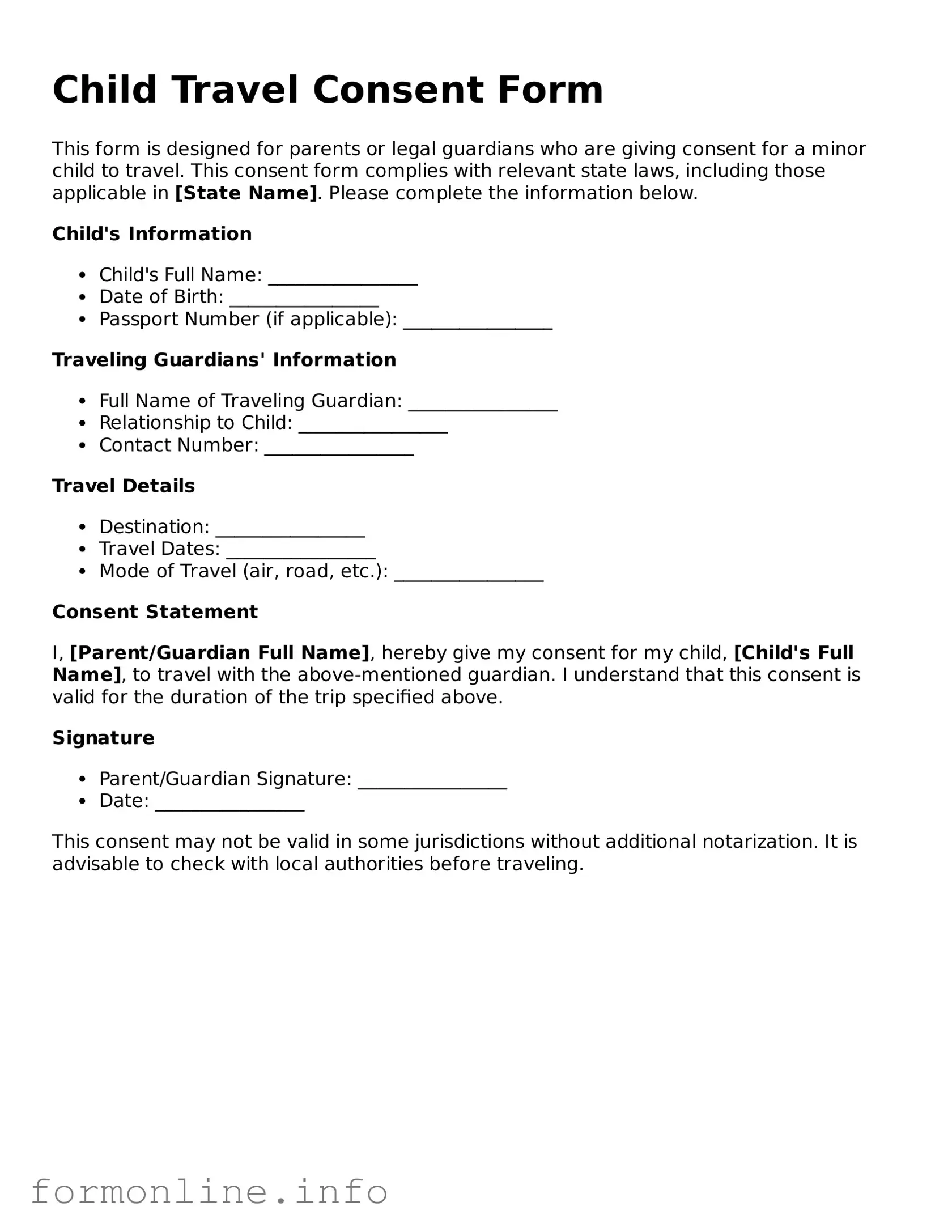Child Travel Consent Form
This form is designed for parents or legal guardians who are giving consent for a minor child to travel. This consent form complies with relevant state laws, including those applicable in [State Name]. Please complete the information below.
Child's Information
- Child's Full Name: ________________
- Date of Birth: ________________
- Passport Number (if applicable): ________________
Traveling Guardians' Information
- Full Name of Traveling Guardian: ________________
- Relationship to Child: ________________
- Contact Number: ________________
Travel Details
- Destination: ________________
- Travel Dates: ________________
- Mode of Travel (air, road, etc.): ________________
Consent Statement
I, [Parent/Guardian Full Name], hereby give my consent for my child, [Child's Full Name], to travel with the above-mentioned guardian. I understand that this consent is valid for the duration of the trip specified above.
Signature
- Parent/Guardian Signature: ________________
- Date: ________________
This consent may not be valid in some jurisdictions without additional notarization. It is advisable to check with local authorities before traveling.
